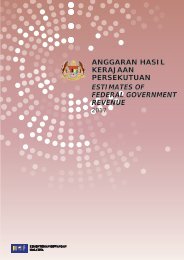WEALTH
2c0esX1
2c0esX1
Create successful ePaper yourself
Turn your PDF publications into a flip-book with our unique Google optimized e-Paper software.
MICRO<br />
Local knowledge<br />
PLUGGING THE<br />
LEAKS OF TIME<br />
To fend off the rising cost of aging, societies<br />
need to lend greater support to geroscience’s<br />
struggle against age-related diseases<br />
DAVID STIPP<br />
The author of The Youth<br />
Pill and winner of the<br />
American Aging<br />
Association’s 2014<br />
Excellence in Journalism<br />
Award, David Stipp has<br />
written about science,<br />
medicine, the<br />
environment and biotech<br />
since 1982. He led<br />
Fortune’s science and<br />
medical coverage from<br />
1995 to 2005 as a senior<br />
writer, and from 1982 to<br />
1995 covered science and<br />
medicine as a staff<br />
reporter at the Wall<br />
Street Journal<br />
By David Stipp<br />
You might call it Murphy’s law of aging:<br />
anything that can go wrong inside you<br />
will do so if you live long enough. Yet<br />
no one experiences the full force of the law, of<br />
course, since one malady is often enough to<br />
lead to the system’s breakdown.<br />
Still, the law’s effects are increasingly<br />
familiar as ever more of us reach the<br />
biodegrading time of life. In fact, noncommunicable<br />
diseases now pose a greater<br />
health burden, in terms of healthy life years<br />
lost, than communicable diseases in most<br />
countries outside of Africa.<br />
Unfortunately, the conventional strategy<br />
in medicine, treating one disease at a time,<br />
isn’t meeting this challenge very well. One<br />
reason is that the ills of aging tend to be<br />
intractable and progressive, and by the time<br />
symptoms appear, they have often caused<br />
irreversible damage. Treatments frequently<br />
yield little gain despite racking up large<br />
medical bills. And even if one ailment can be<br />
held at bay, Murphy’s law guarantees that it<br />
won’t be long before others strike.<br />
Worse, diseases such as macular<br />
degeneration, heart failure, strokes, arthritis<br />
and Alzheimer’s disease often leave their<br />
victims in a costly, disabled state long before<br />
they die. As a New England Journal of Medicine<br />
article on global health trends put it, “What<br />
ails most [elderly] persons is not necessarily<br />
what kills them.” Disability caused by noncommunicable<br />
diseases now accounts for<br />
more than 40% of lost healthy years in the US,<br />
Europe and other parts of the developed world,<br />
according to the World Health Organization.<br />
This burden is increasing rapidly. By 2050, 21%<br />
of the world’s population, about 2 billion<br />
people, will be 60 or older, more than triple the<br />
number in 2000, according to the UN report<br />
World Population Ageing: 1950–2050. Today, the<br />
oldest nation, Japan, has a median age of 46; by<br />
mid-century, half of the people in a number of<br />
countries, including Spain, Italy, South Korea<br />
and Japan, are expected to be over 50.<br />
Meanwhile, older populations in less developed<br />
regions will have quadrupled. In China, an<br />
estimated 437 million people will be 60<br />
or older.<br />
ONE DISEASE AT A TIME DOES NOT WORK<br />
Ominously, life expectancy gains in the US are<br />
already adding more years of disabling disease<br />
than healthy years to people’s lives, says Dana<br />
Goldman, a University of Southern California<br />
health economist. That’s not surprising in<br />
light of the study he coauthored in 2013:<br />
Substantial Health and Economic Returns From<br />
Delayed Aging May Warrant a New Focus For<br />
Medical Research. The study showed that the<br />
one-disease-at-a-time strategy is likely to face<br />
diminishing returns – that is, smaller gains in<br />
longevity – even if in coming years it greatly<br />
reduces the incidence of the two leading<br />
causes of death in the developed world, heart<br />
disease and cancer.<br />
Indeed, the strategy increasingly resembles<br />
the little Dutch boy of popular legend: instead<br />
of saving the day by plugging a dike leak<br />
with his finger, he’s overwhelmed as one<br />
leak after another springs out. That’s Murphy’s<br />
law at work.<br />
36 • Allianz



